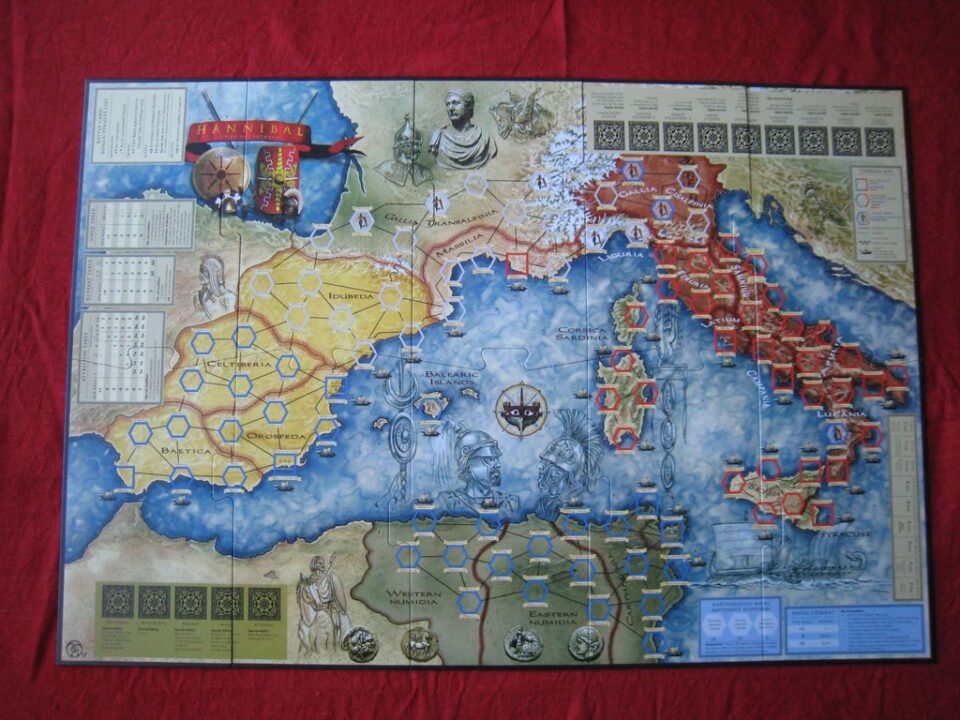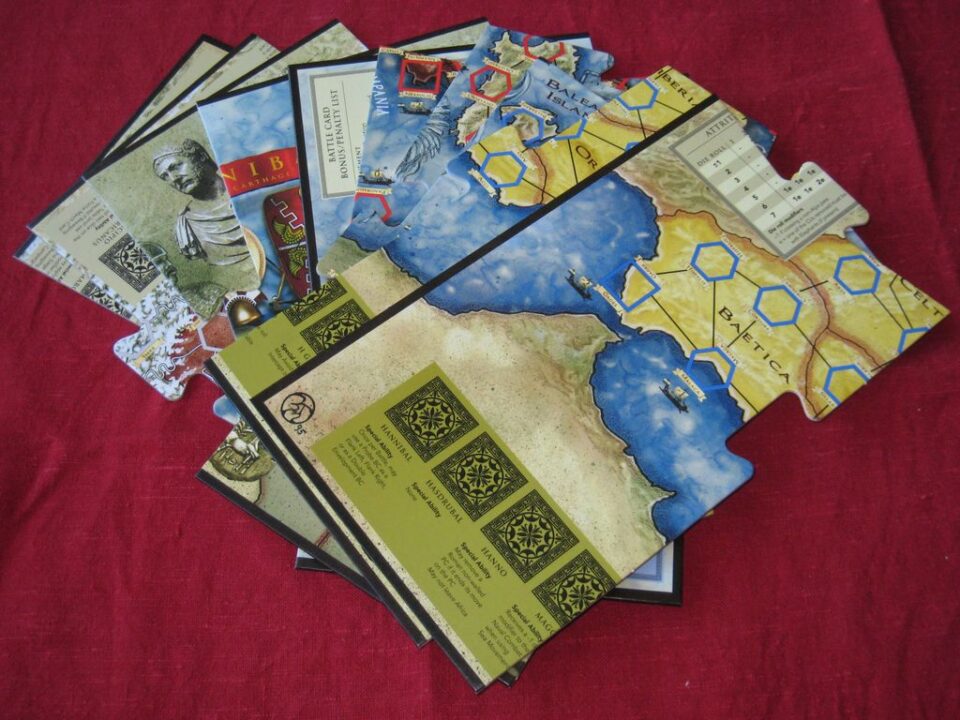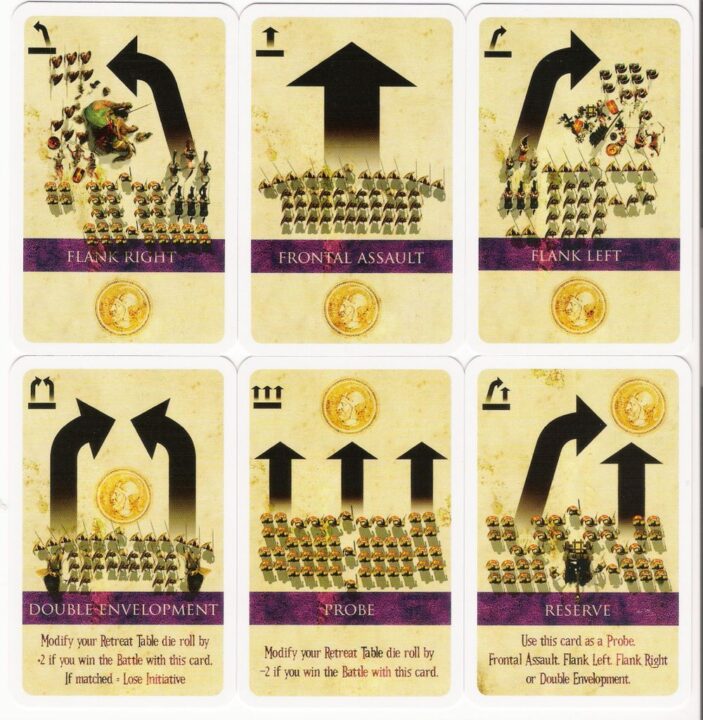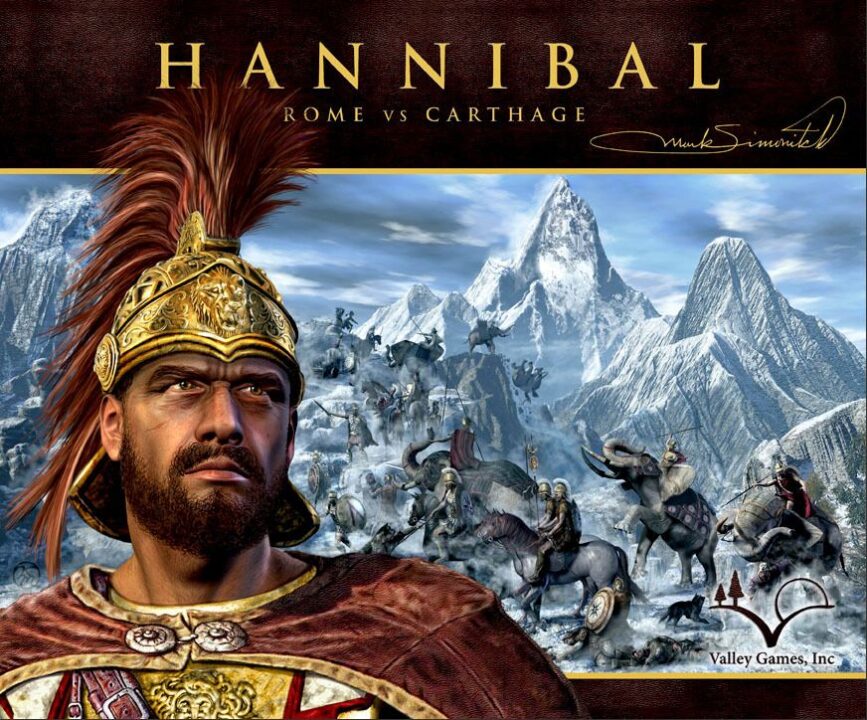Overview
Welcome to my review of Hannibal: Rome vs. Carthage, a game that brilliantly captures the essence of historical conflict through its deep strategic gameplay. This board game is a battleground not just of armies but of wits, where card-driven mechanics, asymmetric player abilities, and the cunning use of bluffing and diplomacy all collide to craft an encounter that will have you and your friends hooked from the outset. Ready your forces and sharpen your mind in this duel of ancient titans.
How It Plays
Setting Up
To set up a game of ‘Hannibal: Rome vs. Carthage’, the map is unfolded and pieces are placed: Roman and Carthaginian forces start on predetermined territories. Players receive their respective decks of strategy cards and leaders take the stage. Provisions are made per the scenarios for forthcoming epic tales of conquest.
Gameplay
A turn begins with players drawing strategy cards, forming the basis for movements and battles. Then, they unfold Machiavellian schemes via troop movements and power plays, utilizing cards for orders or events. The constant push-pull simulates the historical tension like a Pendulum of war.
Winning the Game
Victory is secured not merely by martial prowess but by strategic supremacy: controlling key areas, outmaneuvering the opponent, and managing resources adroitly. Surviving the political arena can be as vital as battlefields themselves—making Hannibal a cerebral duel of ancient commanders.
Want to know more? Read our extensive strategy guide for Hannibal: Rome vs. Carthage.
Mastering the Hand You’re Dealt
In my last rendezvous with Hannibal: Rome vs. Carthage, my carefully hoarded Action Cards became the pivot point of the campaign. It’s in the channeling of history through cards where the game shines brightest. Standing as both the fuel for movement and feints, cards drive the core of strategy.
Command Decisions
Often use them to relieve sieges, a saving grace as Scipio tried encircling me—a satisfying flip, if I may boast.
The Bluffing Game
Transition your strategy by using just the threat of cards. An empty promise of reinforcements unnerved my opponent, yielding me an unanticipated edge.
Diving next into Asymmetrical player abilities, reflecting on how they shape the battlefield.

Mastering Diverse Play: Asymmetric Powers Unleashed
In Hannibal: Rome vs. Carthage, players get a taste of true historic commander roles due to the asymmetric abilities that align with the inherent strengths of Rome and Carthage. To paint the picture, here’s a snippet from one session where my perfectly laid siege was upended by Carthaginian mercenaries, demonstrating the raw power of asymmetric play.
Roman Discipline vs. Carthaginian Guile
As Romans, I bask in sheer military prowess, often overtaking my foes through brute strength. On the flip side, as Carthaginians, my friend embodies the cunning supremacy of naval and mercenary forces, unveiling strategies Rome rarely wields. These dynamic shifts in power fluidly mirror historical biases, nudging us to explore a wider strategy canvas every time.
Evolving Strategies with Varied Roles
Differing play styles aren’t mere flavor; they’re the crux of Hannibal’s strategy. Rome’s consistency versus Carthage’s unpredictability has laid ground for epic narratives spun over our game table. One moment gleefully recounts a last-ditch Trevian ambush, stunning the legions into disarray—an act underpinning the joy of revolt embraces game turns.
These divergent abilities not only historicize our play sessions but weave in endless adaptability. It’s about embracing uncharted strategies to outwit an opponent who’s not playing by the same rulebook. Now, allow me a moment to guide you to the heart of these stratagems—bluffing and diplomacy elements—a compelling dance of wits and deceit transcending mere mechanics.

The Art of Deception and Alliances
During one memorable game night, Hannibal: Rome vs. Carthage highlighted its fascinating blend of bluffing and diplomacy. Diplomacy Dance kicked off with uncertain alliances. Amidst Rome’s steadfast legions and Carthage’s cunning elephants, it was the unseen – the bluffs, the promises, and the threats – that truly swayed the tides of conflict.
What followed was a Bluffing Ballet where the cards we held closely weren’t merely for battle; they were powerful psychological tools. Each feigned advance and cleverly disguised weakness led to a palpable tension – culminating in gasps and changed tactics when hidden armies were finally revealed. In those moments, amidst friends, Hannibal taught us that warring empires were ultimately shaped as much by their diplomat’s silver tongue as by their general’s strategic mind.
Bluffing and diplomacy in Hannibal: Rome vs. Carthage Review aren’t just game mechanics; they’re the vibrant core that can turn acquaintances into rival statesmen around your table. So, do I recommend Hannibal for those who cherish cunning over combat in their historical dramas? Without a question, the Senate approves.

Conclusion
As we bring this review to a close, ‘Hannibal: Rome vs. Carthage’ stands out as a masterful blend of strategic depth, asymmetrical player abilities, and the thrilling unpredictability of bluffing and diplomacy mechanics. It’s a game that not only challenges your strategic prowess but also tells a compelling story through its gameplay—one that’s as rich and dynamic as the historical conflict it emulates. Whether it’s outmaneuvering your foe on the battlefield or swaying the political tides to your favor, ‘Hannibal’ ensures that every session is loaded with pivotal decisions and memorable moments. For enthusiasts of historical war games with a flair for cunning and diplomacy, this gem is not one to overlook. Until our next tabletop adventure — may your strategies be sound, and your bluffs be believed!


